INSPECTION AND REMEDIATION
Historic Stone Retaining Wall Failures
Historic Stone Retaining & Boundary Wall FAILURES
Historic stone retaining and boundary walls are a common feature throughout the Southwest, many of which date back to the late 1800s and early 1900s. These walls typically comprise stone facing on steeply cut rock or soil slopes or soil embankments and often have shallow foundations. Many historic walls were constructed without mortar, i.e., as dry stone walls, or were pointed with lime mortar, which is permeable to some extent.
These historic walls generally provide adequate support but are not engineered structures and do not comply with modern construction standards. They are extremely vulnerable to sudden collapse should site conditions change.
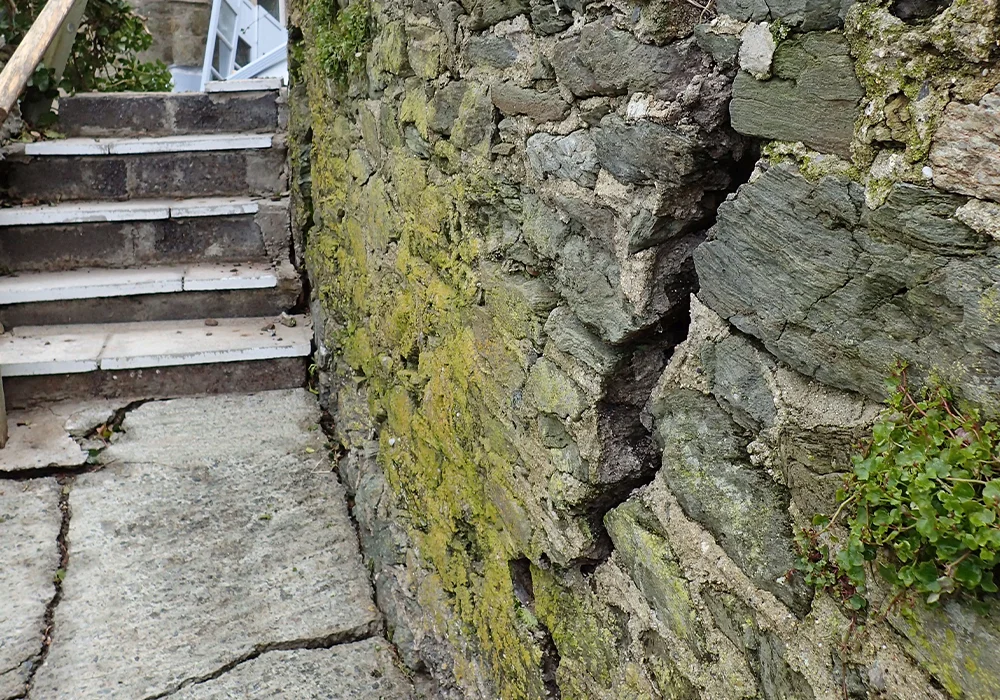
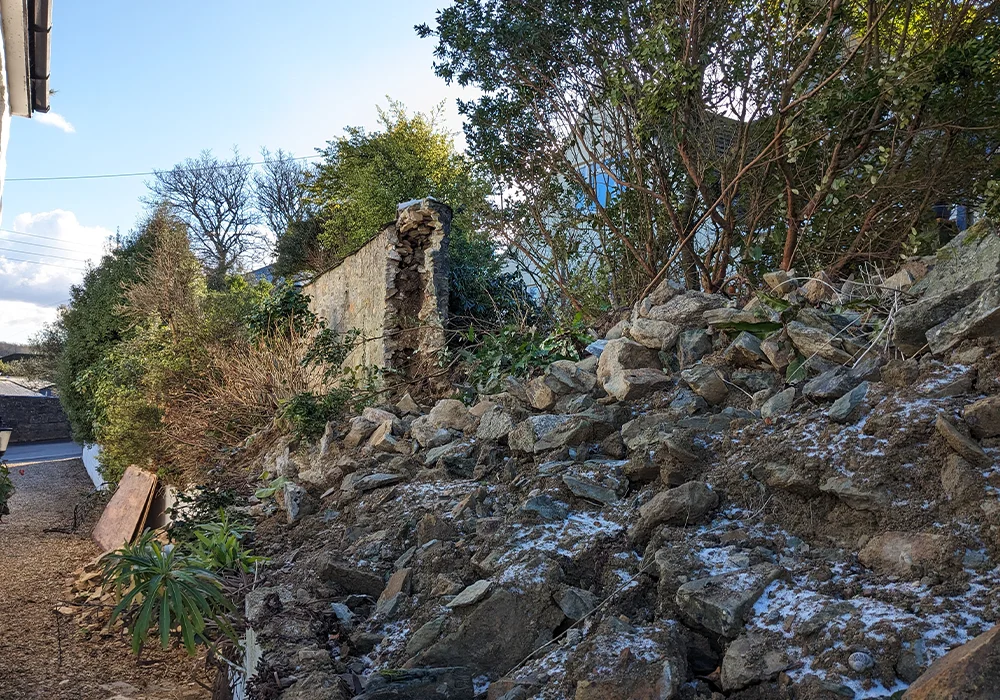
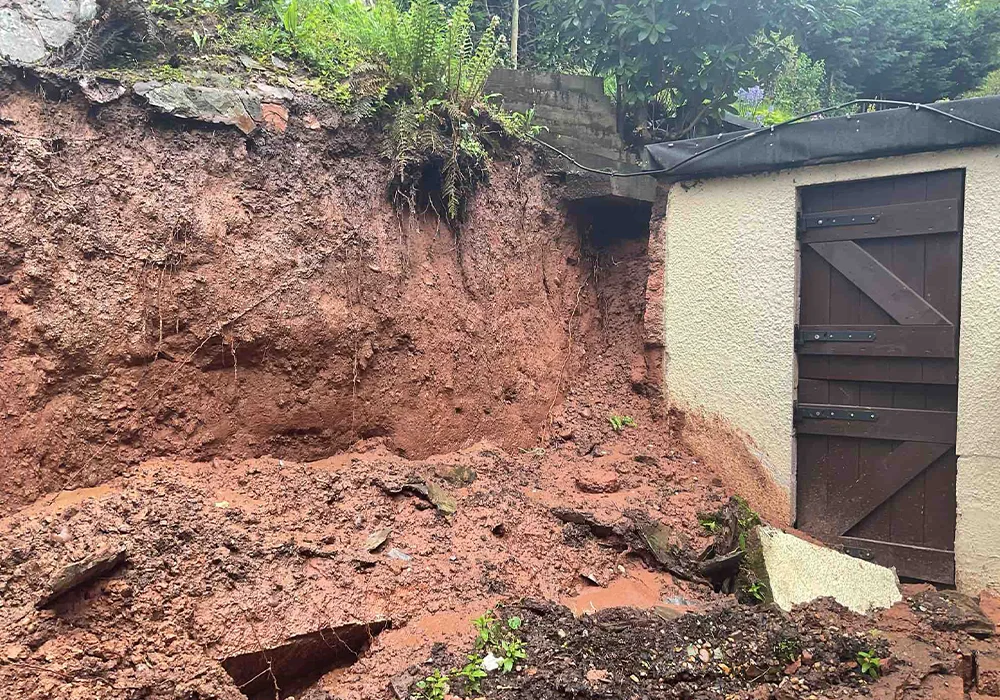
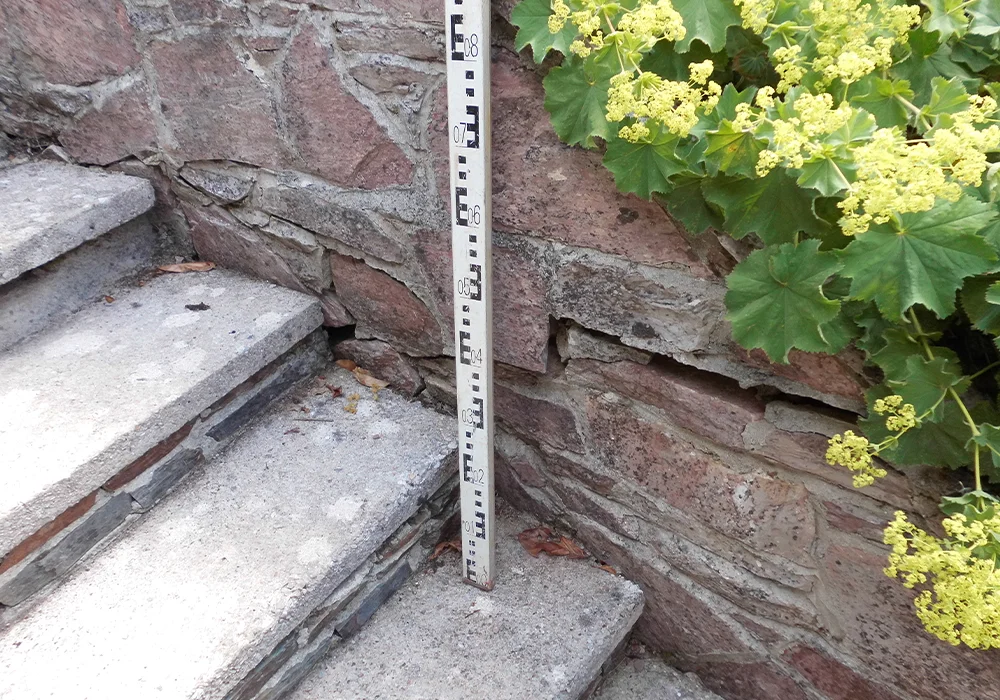
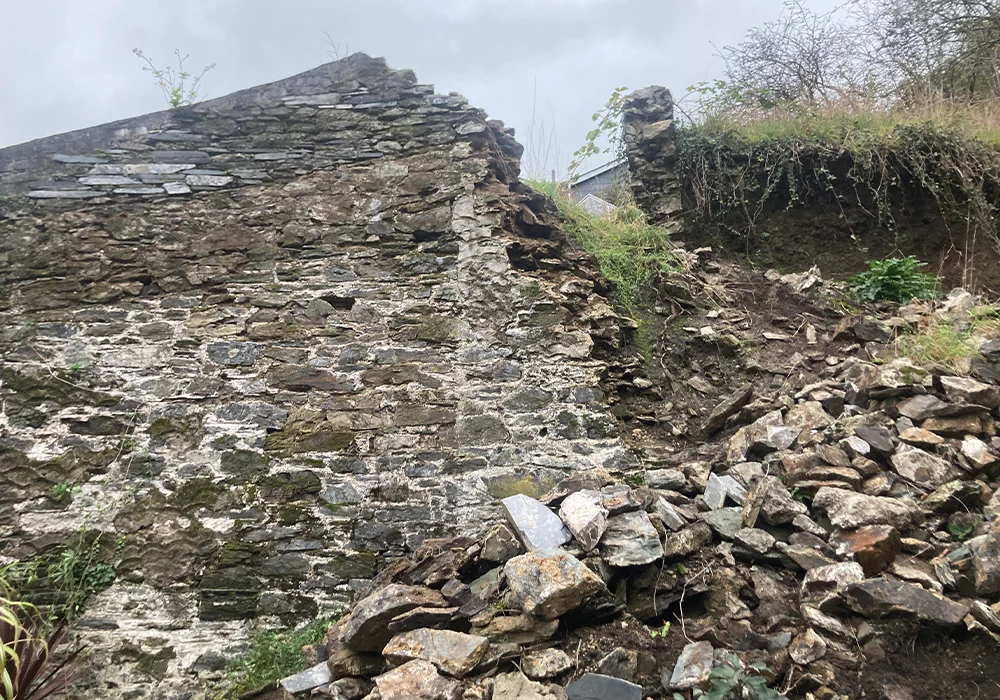
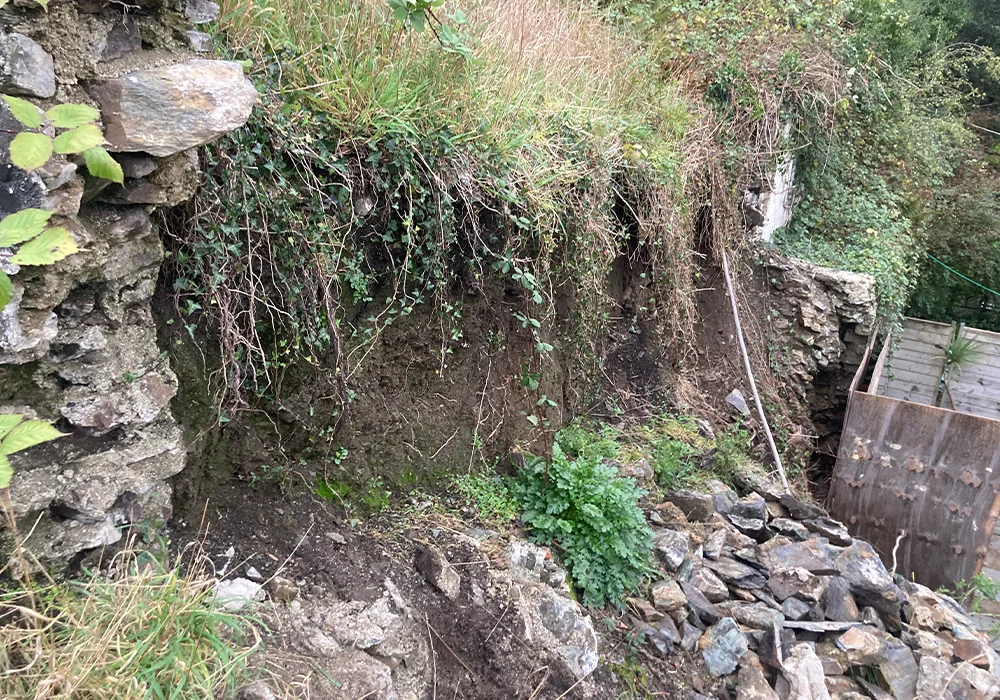
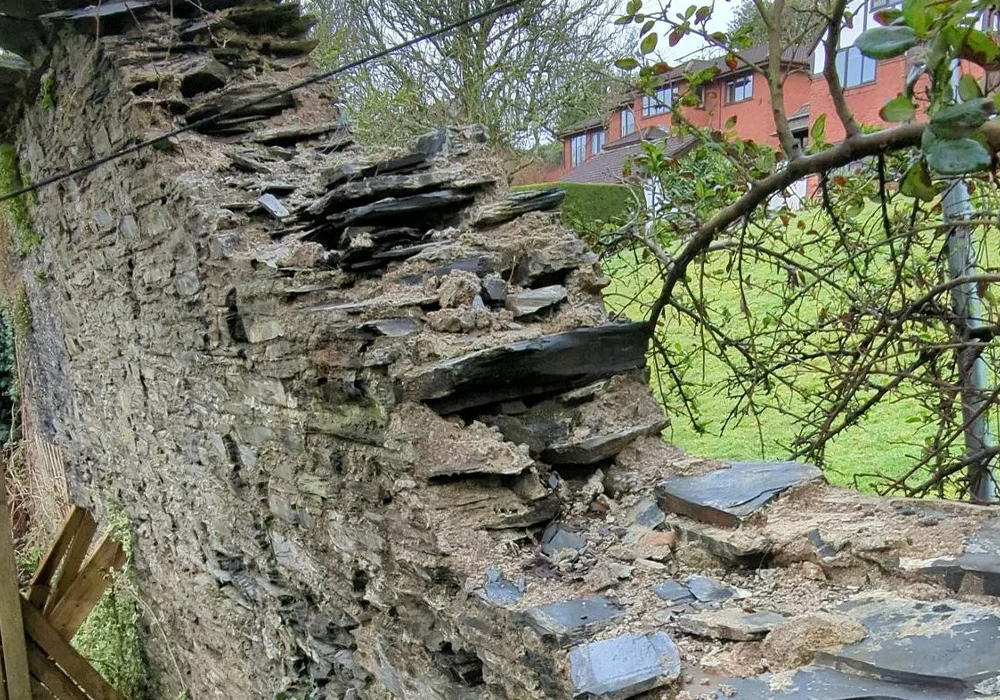
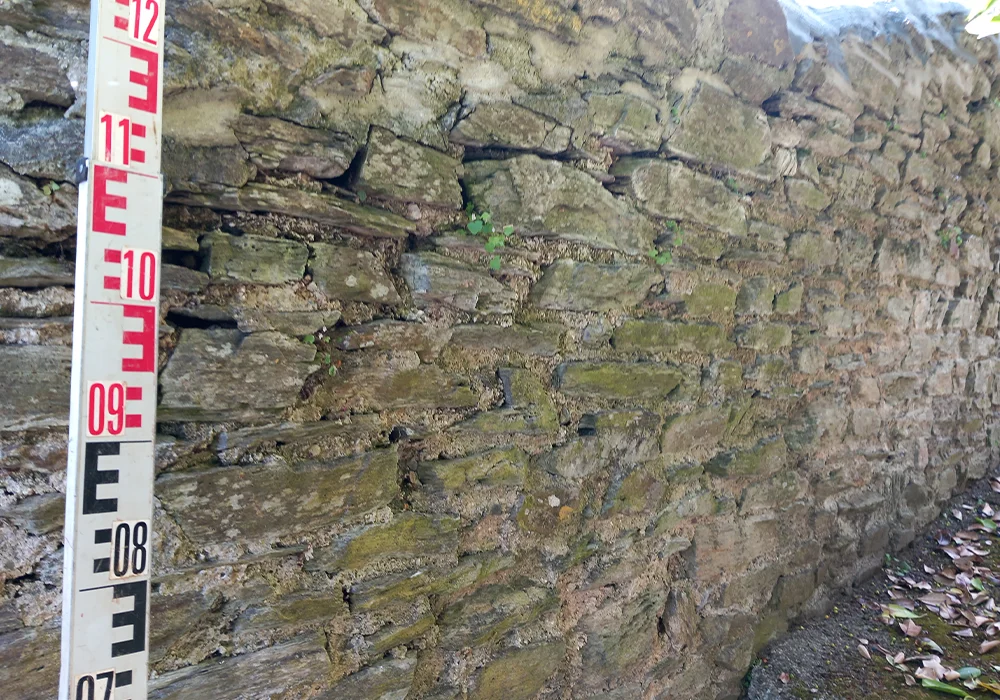
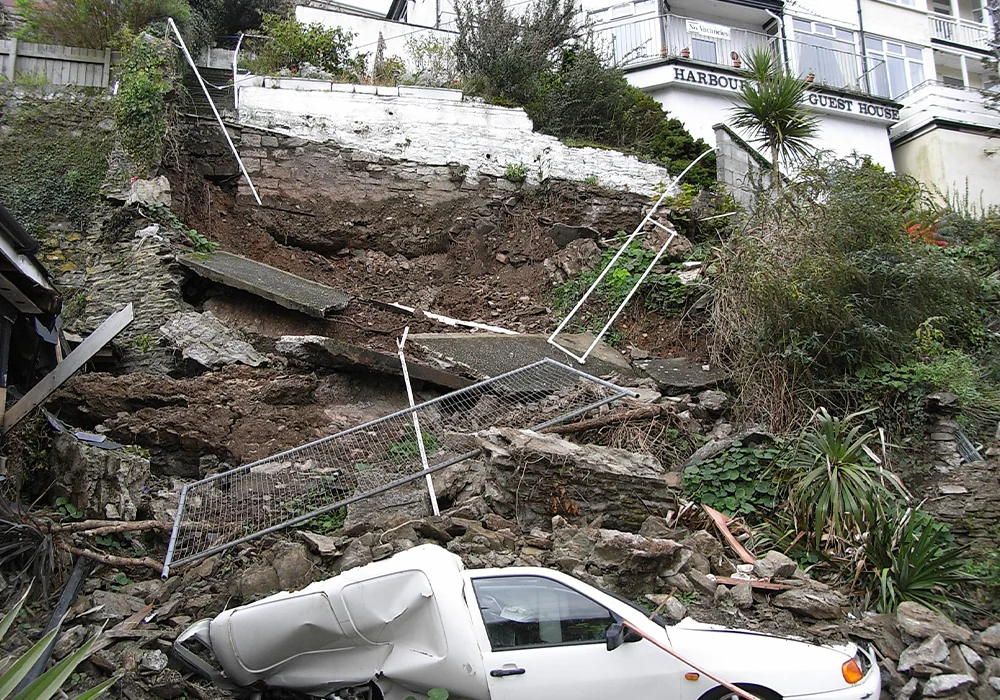
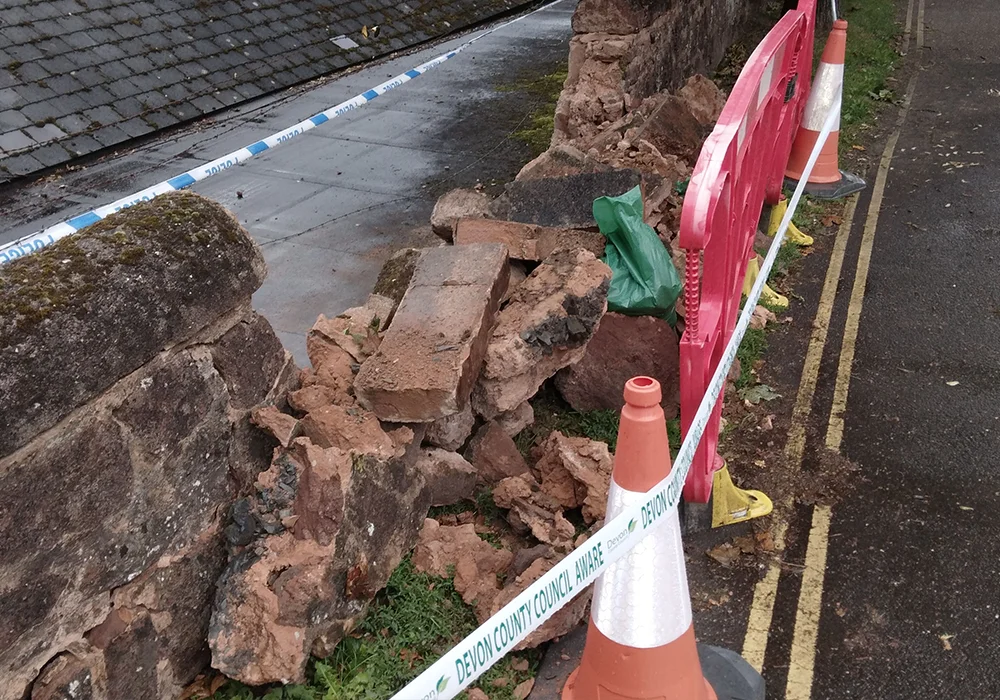
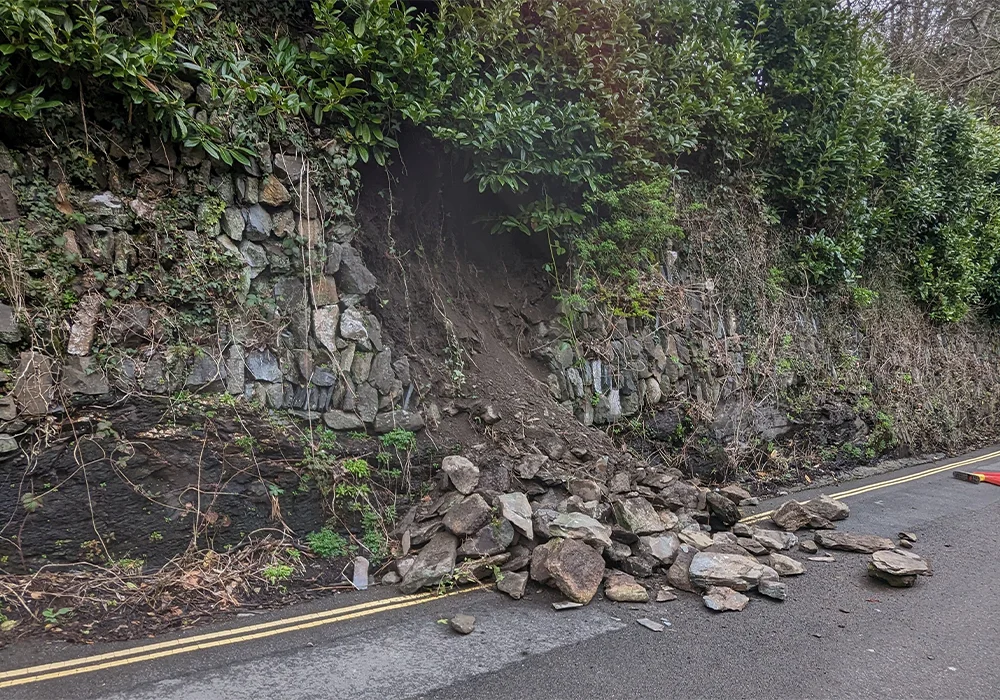
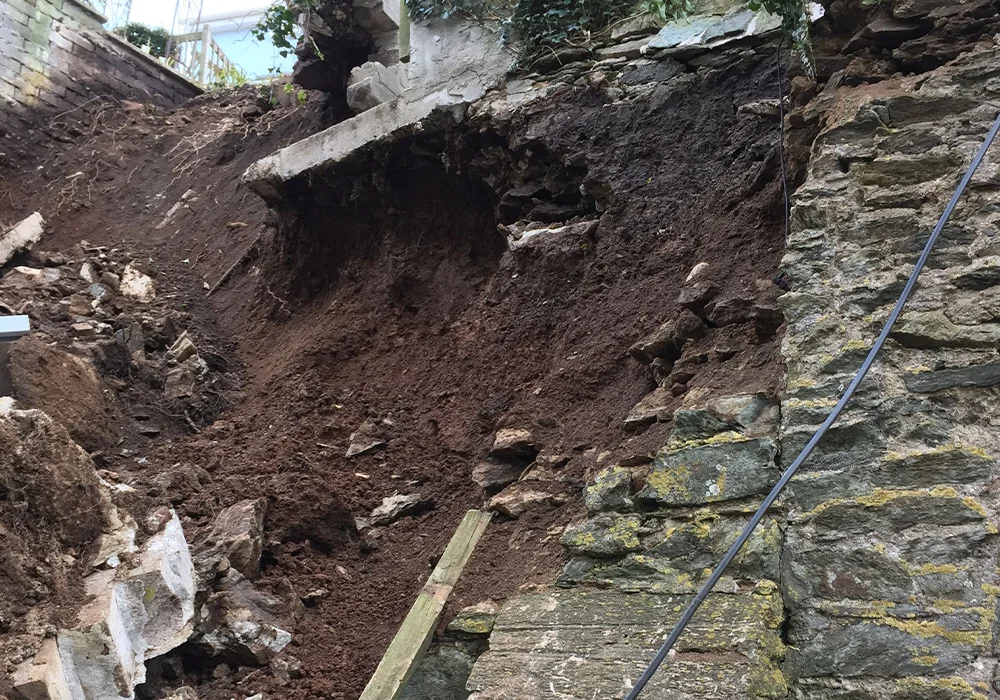
factors that can cause collapse:
- Prolonged Heavy Rainfall
Increasing in number and intensity due to climate change, causing changes in hydrostatic conditions to the rear of the wall. This results in increased surface water run-off or seepage through the wall and increased pore-water pressures behind the wall, reducing the shear strength of the retained soils.
- Vegetation Causing Destabilisation
Root ingress can physically weaken the structure, and tall vegetation or trees can be destabilising under wind loading.
- Physical Changes
Such as increasing the weight or loading above the wall or removing any restraint or undermining at the base of the wall.
- Vibrations
Weakening the structure. Inappropriate Maintenance: Such as re-pointing with impermeable cement mortar, preventing natural drainage and causing pore-water pressure build-up to the rear of the wall.
Proactive Regular Inspection
- Outward Rotation / Leaning and Tension Cracks:
Main indicators of instability and future collapse.
- Stepped Cracking:
May indicate foundation failure or movement.
- Bulging and Outward Deformation:
This could indicate a landslip to the rear of the wall.
- Misalignment at the Top of the Wall:
Can indicate differential movement along the wall.
- Spalling Stones:
Usually indicates localised wall deterioration.
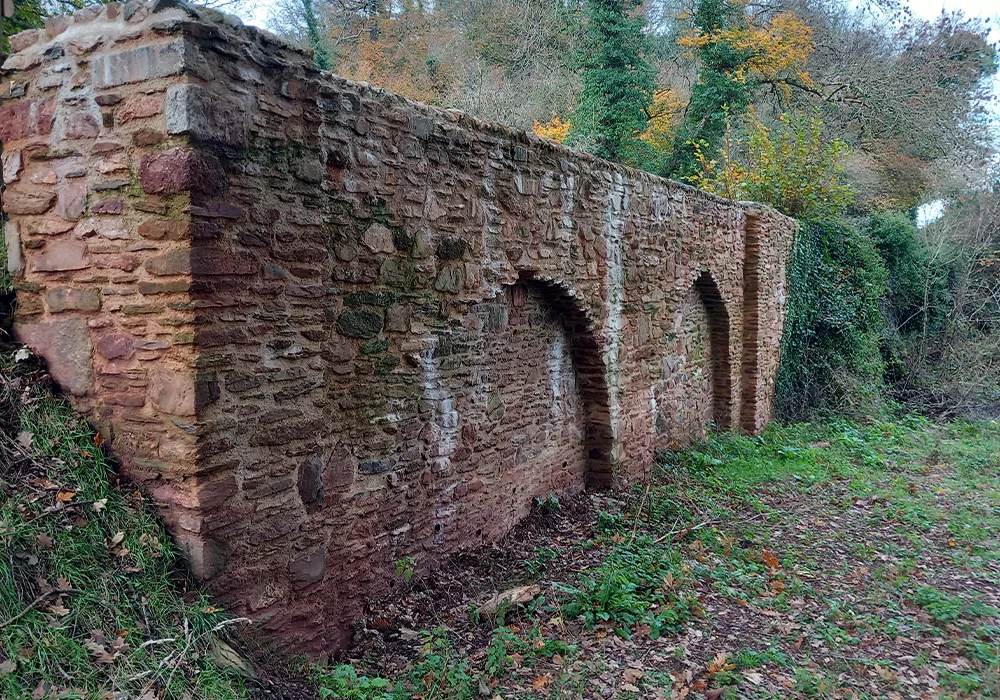
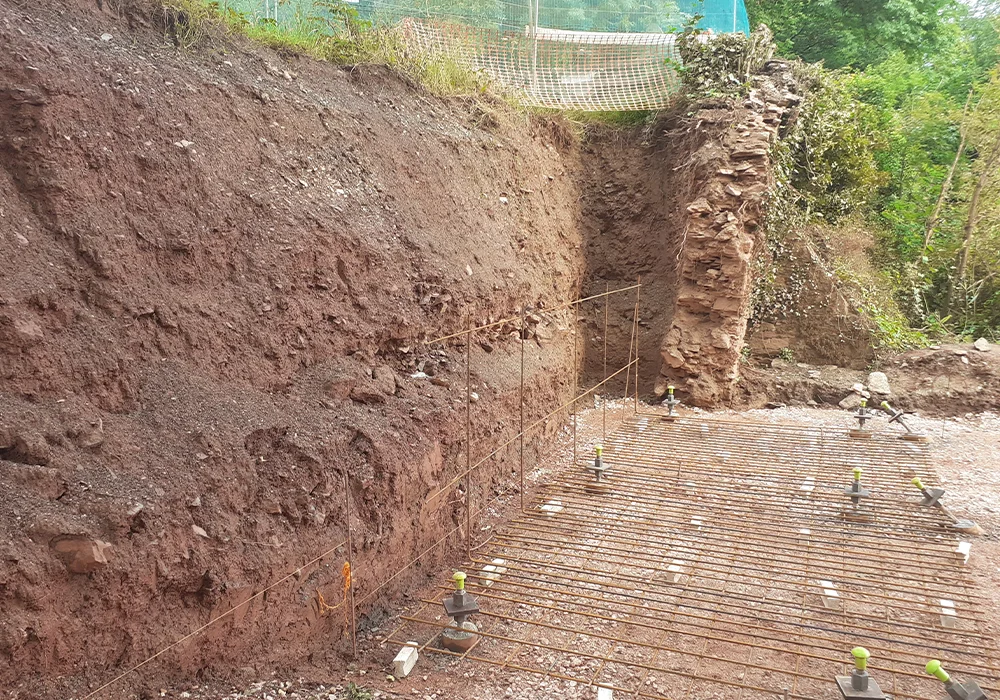
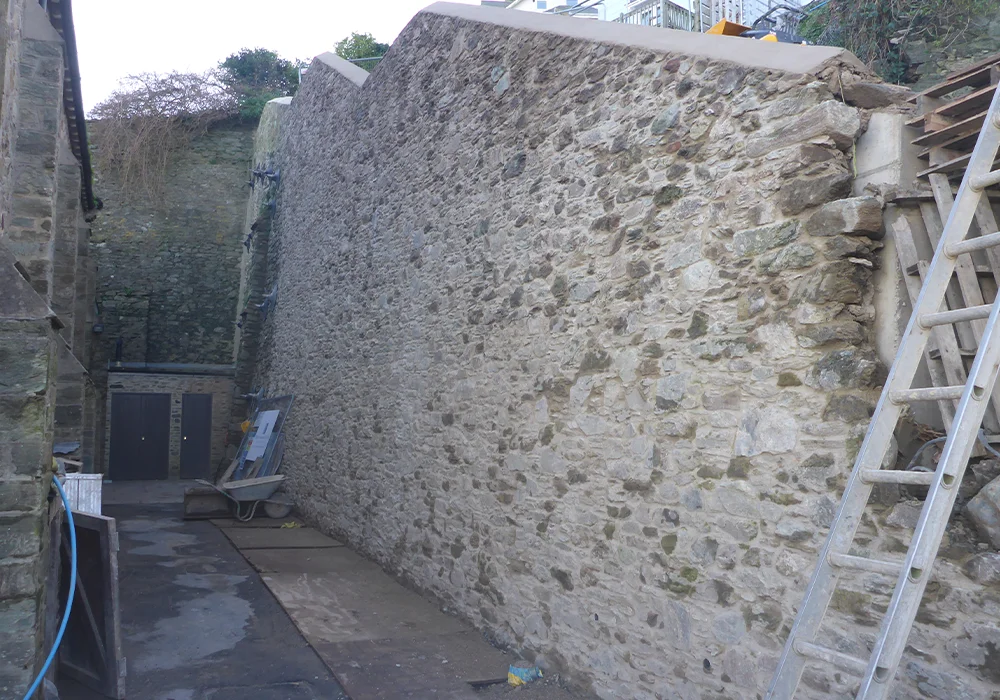
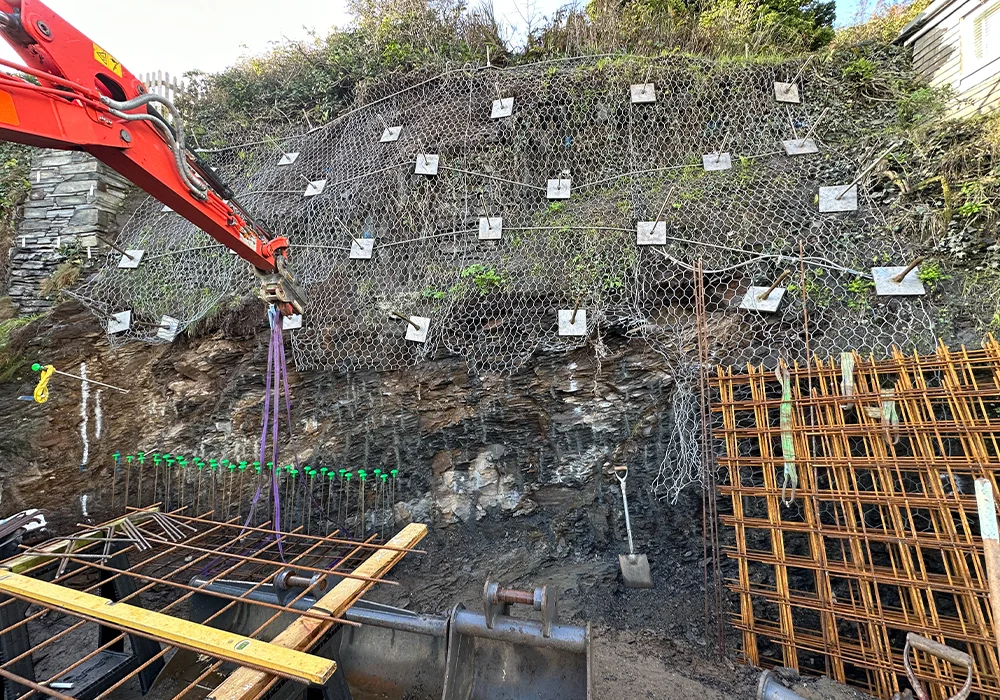
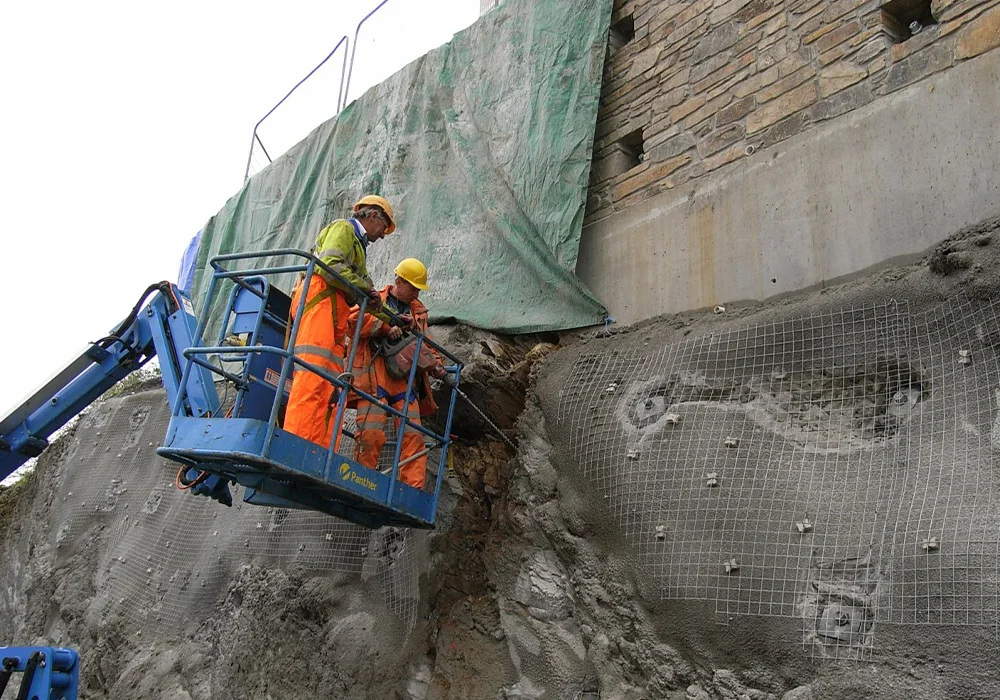
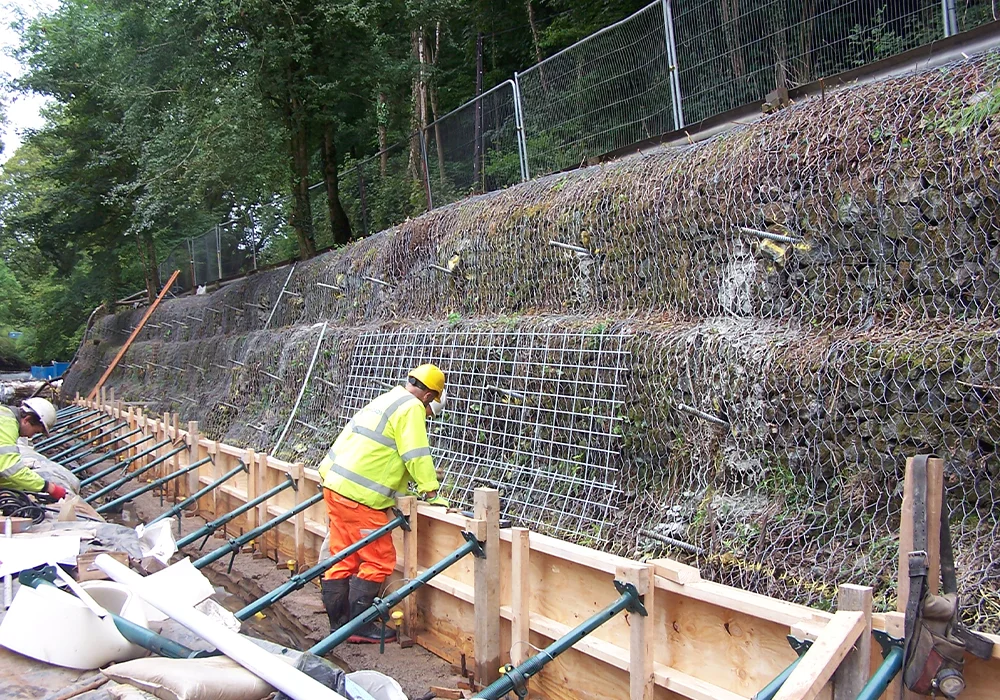
Construction & Remedial Works
Any proposed construction works in the vicinity of historic walls need careful consideration of the potential effects that the construction may have on the stability of the historic wall. Condition assessments should be carried out before any construction work begins.
JGP can also provide remedial designs and construction supervision for collapsed walls. This includes assessing the remaining wall profiles, founding strata, and the engineering characteristics of the retained soils and rock. Replacement walls are carefully tied into any remaining existing walls, and stone facing can be used to aesthetically match the historic wall.
Contact Us
Historic Stone Retaining Wall Failures
For expert assessments and maintenance of historic stone retaining walls, trust JGP to help preserve these structures and prevent dangerous and costly failures.
Contact us today to discuss your needs, book a condition assessment, or learn how our experienced team can assist with inspections, remedial designs, and construction supervision to ensure the stability and longevity of your historic walls. We’re here to help you protect and maintain these valuable assets.
our clients






FURTHER QUESTIONS?
Contact us today to discuss your project or concern, book an assessment, or learn how our expert team can help you with whatever your requirements are.
- Services
- Useful Links
- Policies
- Contact Us
Copyright © 2024 JGP All rights reserved | Website GSL Media
Company No: 4184549 Registered Address: JGP, Leonards Road, Ivybridge, Devon, PL21 0RU



